By Dan Shea & Heebum Hong
with some photos by Namho Kim
Recently there has been an upswing in interest regarding the weapons of North Korea. This is due not only to the current saber rattling in the region and the changing of the leadership, but to how difficult it is to obtain accurate information as well as the disinformation campaigns that have been successfully waged by the North Korean propaganda bureaus. Heebum Hong and Dan Shea have studied the small arms of North Korea for decades and both consider that many of the indigenously made small arms are of very good quality. They have combined their efforts to make this article as inclusive and comprehensive as possible. The article starts with the elusive Type 73 machine gun, and then takes a more organized historical perspective.
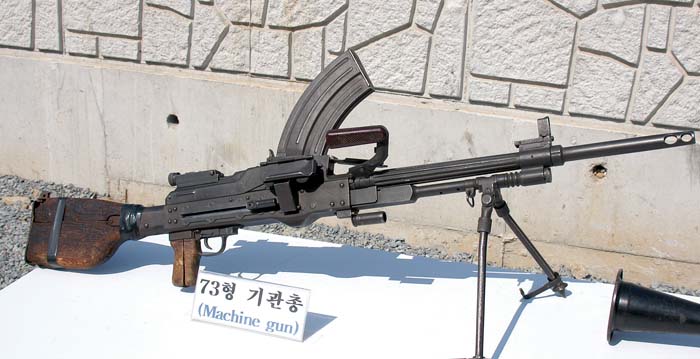
The North Korean Type 73 machine gun is probably one of the most unknown mass-produced automatic weapons in the world. Most Communist Bloc firearms stopped being so secret after the fall of the Soviet Union, but North Korean firearms are still hidden behind a shroud. Even within the mist of secrecy regarding North Korean firearms, the Type 73 is still clouded in mystery. Vague pictures showing parts of the Type 73 as soldiers carried them were released from time to time in North Korean propaganda films, but no details were ever released. The Type 73 was occasionally spotted in the surveillance photos taken by South Korean or U.S. forces. The reason for the rarity of sightings is, of course, their obsessive secrecy; so top secret in fact, that most of North Korea’s indigenous weapons have no printed manual. Armorers or mechanics have to learn, memorize, and if one really wants to have some kind of manual to refer to, he has to hand-write one. Manuals like this are one-of-the-kind, and hard to get out of North Korea.
Refugees who escape North Korea via China sometimes have information, but that information might have some problems. Because of the rules of absolute secrecy, even those with long military backgrounds usually can’t figure out what’s going on in any other unit so their information is often limited. Many of those refugees also give exaggerated information because they want to make themselves look more important and essential as a bargaining chip in refugee status, or they believe and parrot the typical North Korean propaganda. South Koreans have learned that if you believe all the stories from refugees from the North, you will believe North Korea is a country that has the world’s strongest army, with enough weapons, the skill, and the will to destroy the rest of the world’s armies altogether. It would be foolhardy to not consider the North Korean military and their special units to be highly trained as well as skilled fighters, but the perspective should be kept to scale – the North Korean military is a regional threat. They also have excellent small arms and good quality equipment for their top tier units as well as clandestine exports.
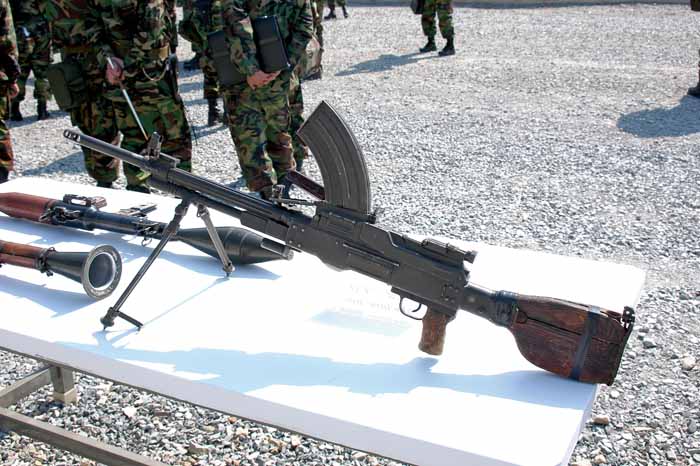
In such an environment, reliable information about the Type 73 is very hard to come by, but the South Korean army has one sample. Another has been captured from insurgents in Iraq. The South Koreans have not revealed how they got their sample, but there is speculation that after a heavy flood in the North, the dead body of a North Korean soldier might have been found south of the DMZ, with this Type 73 machine gun on a sling attached to the body.
The sample viewed reveals some interesting features. First, the Type 73 is outwardly based upon the Russian PKM machine gun, which is not so surprising; but the feeding system is another matter entirely. The Type 73 uses a dual feeding system, and can utilize either a top mounted magazine, or a side fed metallic belt. This is very peculiar, since it’s using 7.62x54R ammunition, not the 7.62×39 round. This means the Type 73 must use its own special 30 round magazine, not an AK47 magazine (in this case it would have been the North Korean Type 58 or 68 rifles). Even though the Type 73 can be used as a magazine-fed machine gun, the gunner has no option to use a magazine from his comrade riflemen. Thus, the Type 73 is an anomaly.
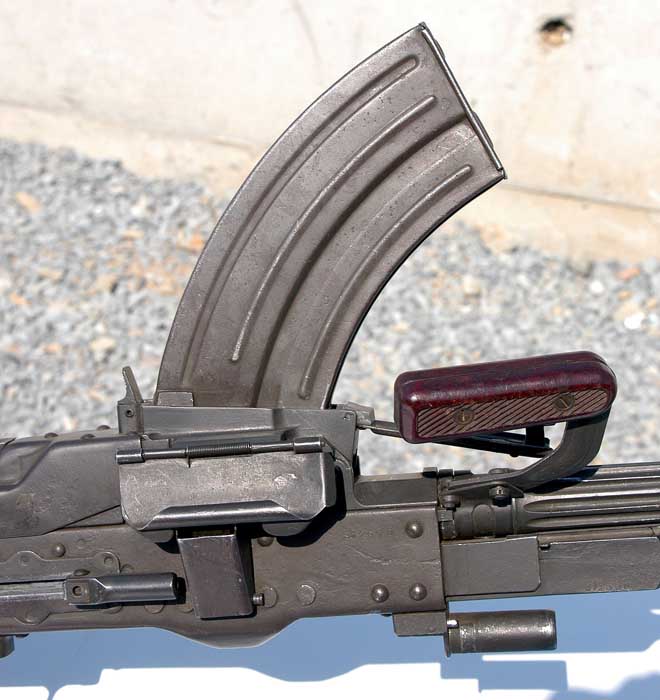
In fact, weighing more than 10kg (approximately 22.05 lbs), and using a full-power rifle cartridge (not lower powered assault rifle cartridges like the 7.62x39mm), with its quick change barrel configuration, the Type 73 is technically close to a GPMG, rather than what are called squad automatic weapons like the RPD or the MINIMI/M249. South Korean military intelligence assumes that the gun was developed at least partially for the SAW role. Using the larger caliber is considered to be a counter weapon to the U.S. M60 GPMG that was prevalent in U.S. and South Korean forces in the conflict zones. North Korea is quite sensitive over what the U.S. and South Koreans use, and the North Korean analysts have closely studied the Vietnam War. Since no one knows the real reasons, we only can speculate.
The North Koreans decided to make a SAW similar to the M60 GPMG though a puzzling addition is the magazine-fed capability. There are several possible influences on this; many of the North Korean army staff during the 1970s had served in the Chinese army before 1945, and even after that, a considerable number of ZB26 or even Bren LMGs (which were lend-leased to China) were in service in the North Korean army for a while through Chinese support. While box magazine feeding limited the firepower, it’s far more comfortable to carry the weapon with ammunition. Having a 100 round ammo can under a PK or PKM is somewhat cumbersome, but the 30 round magazine lowered weight and was easier to carry and fast to reload. South Korean army analysts consider that the Type 73 gunner would be carrying his machine gun with 30 round magazine inserted, and if a threat appears, fire the ammo from magazine immediately. After the ammo in the magazine is depleted, he can assume a relatively stable shooting position and change his ammo source from magazine to belt, which he carried in his satchel or pouch. This is based on observation and sightings of North Korean Type 73 machine gunners carrying the weapon with a magazine inserted.
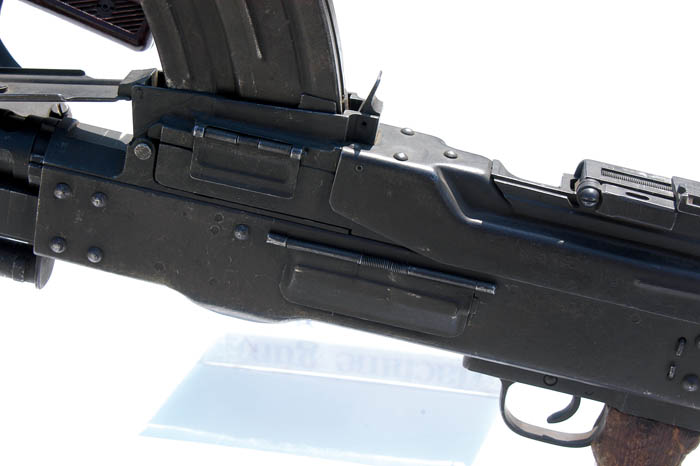
One more probable reason for the Type 73’s dual-feed adaptation is North Korea’s affiliation with Czech firearms. North Korea has used many Czech firearms from the 1960s on, especially for special operations. Their behind-the-line operatives’ favorite machine pistol was, and still is, a suppressed Vz61 Skorpion and some CZ82s were found in a North Korean spy’s weapon cache. Most of all, the CZ75 was copied by North Korea and used as the officer’s standard pistol. Rumor says that the late Kim Jung Il, who was an avid gun collector, personally preferred Czech firearms. North Korean firearms developers were clearly influenced by the Czech VZ52 machine gun, another dual-feed weapon which utilizes either belt feed or a top mounted magazine.
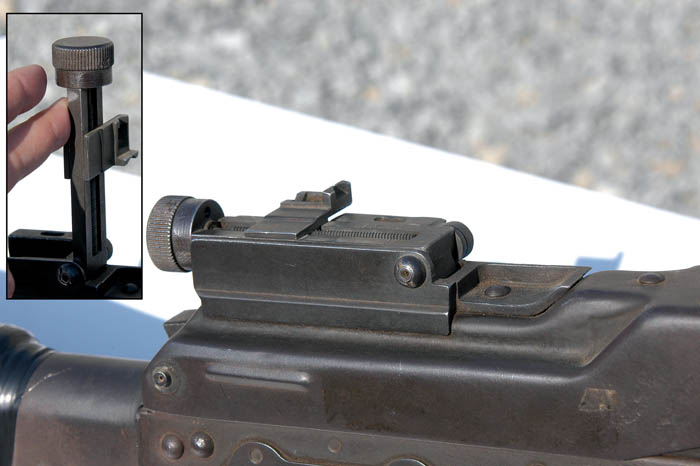
Whatever the reason for development, North Korean military leadership was not so impressed with the Type 73; while it could sometimes be seen in 1970s propaganda and at military parades, from the early 1980s it’s been more and more difficult to see one in use, although there are many more sightings today in North Korean YouTube videos and other propaganda releases. In 1982, the Type 82 machine gun appeared in service. The Type 82 is basically a PKM copy without magazine feeding capability. It seems that many Type 73s were moved to reserve or militia service, but nobody can be sure. The only thing we can confirm is that the Type 82 is much more visible in active duty North Korean army service, while the Type 73 is very rare today. There’s only one sample each of Type 73 and Type 82 known to the public: a Type 73 is in South Korean Army custody, and a Type 82 is possessed by the Japanese Coast Guard – they recovered one from a North Korean spy ship they sunk in 2002. (One more Type 73 has recently been captured in Iraq.) While the Type 82 is basically a copy of the PKM, you can see some similarity with the Type 73 from its stock, bipod and rear sight.
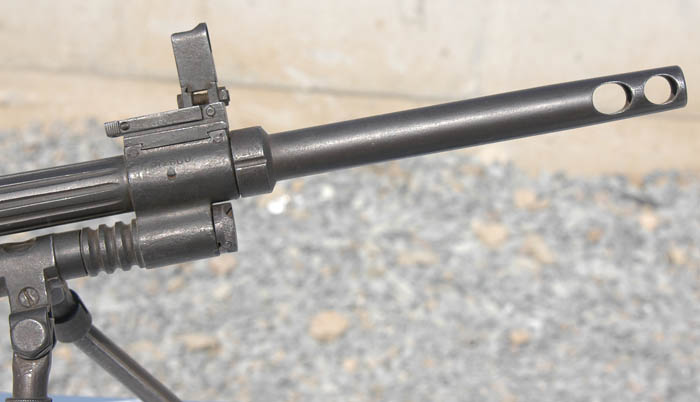
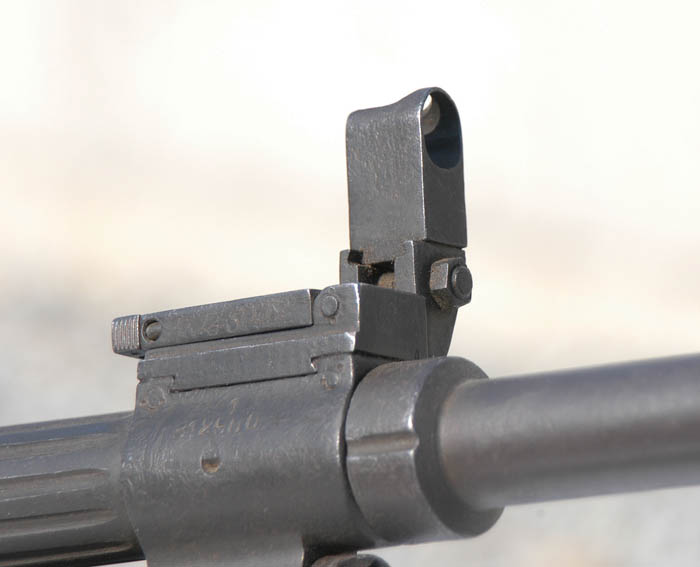
Lineage of North Korean Firearms
There had been some small production of firearms in the North Korean areas during the 1800s-1946, but it was one-off of early firearm styles. The North Korean military was initially started with Soviet Union supplied rifles – the Mosin-Nagant, the SKS, and small quantities of SVT-40s, as well as a variety of machine guns and handguns. The first weapon manufactured locally was the Type 49 submachine gun, made in 1949. This was a license built copy of the Soviet PPSh-41 or “Pappa-sha.” The North Koreans chose to use the 71-round drums and not the 35-round curved magazines. Speculation is that the ‘Great Leader’, Kim Il Sung, thought the large-capacity drum was intimidating and tactically an advantage. The Type 49 was the main submachine gun of the North Korean army, and they used these extensively during the 1950s Korean War. Their main infantry weapon was the rifle, which was used much more than any submachine gun, but the image of those ‘Burp Guns’ with large drum magazines was so strong, that it became the symbol of the ‘communist intruders’ in South Korea, just like the MP40 became a symbol of Nazi Germany, out of it’s actual proportion of use in the German army.
Handguns
Type 64
The first handgun ever developed and manufactured by North Korea was a Type 64 (1964); but, in fact, it wasn’t actually ‘developed’. It was a very close copy of the FN 1900. The reason why North Korea made a copy of the Browning 1900 during the 1960s, when there were already a bunch of good .32 ACP pistols to consider, especially the PP lineup, is very unclear; perhaps North Korean officers and engineers were very familiar with the gun, which was relatively abundant in Asia during 1900-40s, or maybe it was considered by North Korean leadership as a very important weapon symbolically.
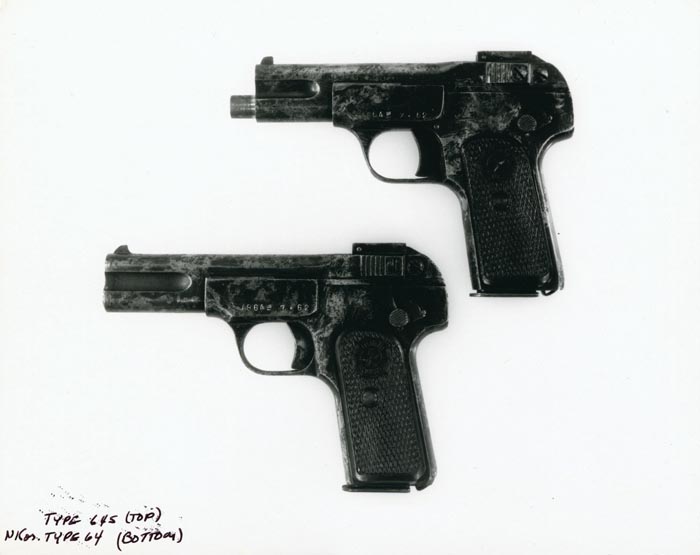
In 1909, a patriotic ex-Korean army officer who lost his position because of the Japanese (the Japanese army forcefully disarmed and disbanded the Korean army in 1905), shot and killed a Japanese politician who had played a major part in the colonization of Korea by Japan. The weapon used at that time was the M1900. Since this incident is very well known in both South and North Korea, it was probable that the North Korean leadership chose the M1900 to be very symbolic for them, especially since North Korea is very proud of their ex-leader Kim Il Sung’s history as an anti-Japanese warrior.
Whatever the reason is, North Korea issued the Type 64 to high-ranking officers while others used the Russian-supplied TT33 (Tokarev). Some of these Type 64s were also fitted with silencers for special operations. Note that the silencer uses an eccentric style where the bore is off from the center of the suppressor.
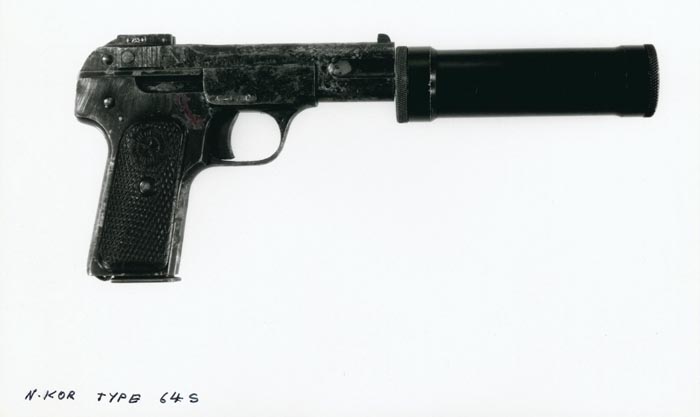
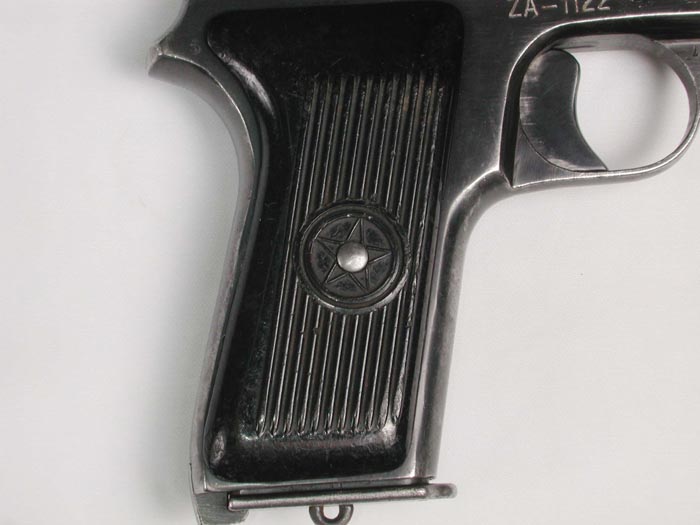
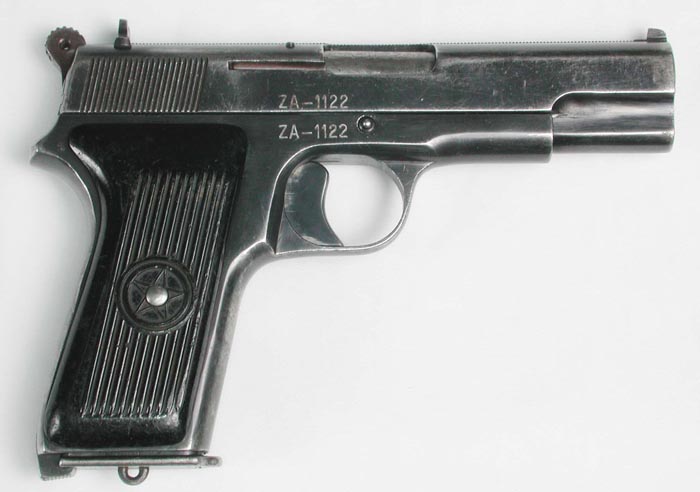
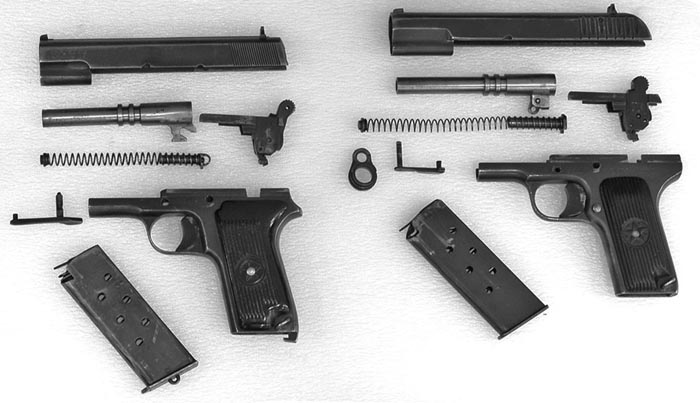
Type 70
It was very clear that the Model 1900 was already an obsolete design in the ‘60s; and North Korean designers soon had a new design, this time indigenous. It was the Type 70 (1970), a simple blowback .32 ACP pistol with exposed hammer. It’s design was perhaps inspired by the FN 1910, the Walter PPK and Makarov pistols, but it’s single action and very simple (unlike the PPK or Makarov), and has a very strange manual safety- it’s a cross bolt type, but not easy to use because it’s just above the trigger, and the manual safety also works as barrel holding latch. To field strip, one has to pull the safety out first. The magazine holds 7 rounds.
Baek-Du San
Until the 1980s, North Korea’s military used the Type 64 and the Type 70 for high-ranking officers and the Type 68 for others who need sidearms. In the late 1980s, the Type 68 was gradually replaced by a new handgun, the Baek-Du San (White Head Mountain), in 9x19mm. This is a very close copy of CZ75 of that era, but experts doubt that technical support to make it was actually supplied from China as is assumed. The Chinese happened to make a copy of the CZ75 (the NZ75) around that time. Unlike the NZ75, the Baek-Du San is designed very closely after the original CZ75 (rumor has it that this was adopted because of Kim-Jung Il’s personal orders). He was a known collector and shooter of firearms, and he had ultimate power in his country. If he actually ordered them to adopt it, nobody in North Korea would resist. The fact that the CZ75 is an excellent handgun notwithstanding.
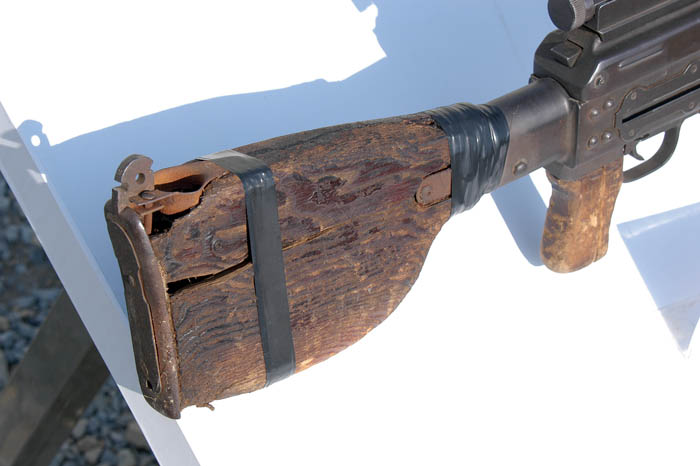
While North Korea makes military handguns themselves, they imported considerable numbers of foreign handguns. The most notable one is the Baby Browning, which was occasionally found during the 1970-90s. They were a favorite sidearm for North Korean spies, almost always with a sound suppressor, which is believed to be made in North Korea. Considerable numbers of Canadian built John Inglis High Powers were found with North Korean spies or Special Forces during the 1960-70s. These were probably supplied from a Chinese stock of lend-lease weapons left from WWII. In the 1990s, Czech-made CZ82s were also found with North Korean spies, these usually had the North Korean built suppressor as well. Essentially, there is a very active arms manufacturing community in North Korea.
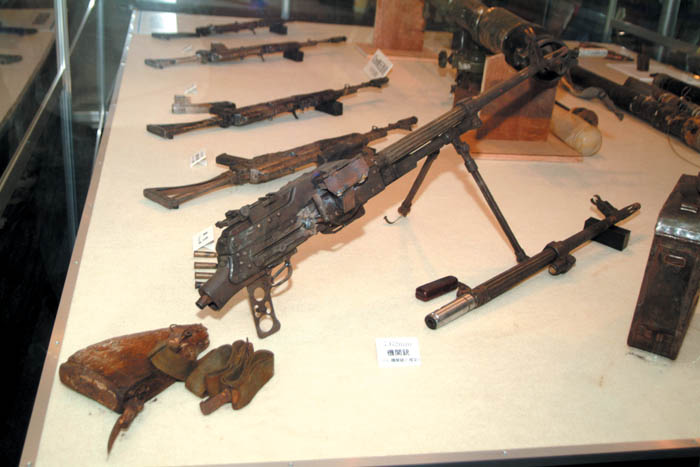
Submachine Guns
Type 49 (PPSh-41)
The Type 49, or Model 49 submachine gun was made in large quantities in North Korea from 1949 until approximately 1955. This is a direct copy of the Soviet PPSh-41 submachine gun in caliber 7.62x25mm Tokarev (7.62TT). The Type 49 is a straight blow-back, open-bolt type submachine gun, with a rate of fire approximately 850-925 rpm, from either 71 round drums or 30 round curved stick magazines. These have been exported to North Vietnam during the war there, as well as numerous other places- and are still in use in outlying districts and sublevels of North Korea. Recognize by the slight oval shape to the rear buttstock, and the marking of a circle with five pointed star within it.

PPS43
While used heavily in the North Korean military, they never made any of the PPS-43 7.62×22 caliber submachine guns indigenously.
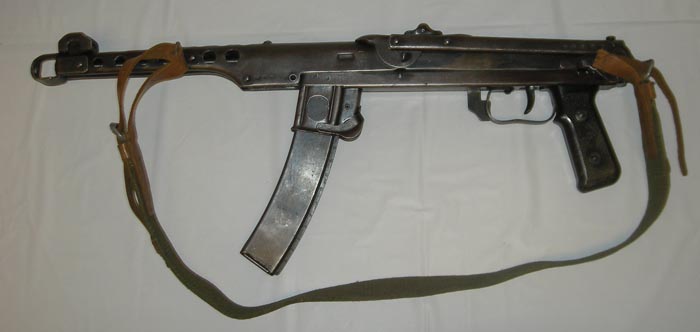
VZ-61 Skorpion
The Czechoslovakian made VZ61 machine pistol is reportedly still in use by covert operatives of the North Korean government. These were obtained at various times in the 1960s, 1970s, and possibly 1980s, and have the standard grey paint finish, with 10 and 20 round magazines. Caliber is 7.65 Browning (.32 ACP). These have a high rate of fire, are very concealable, and when the suppressor is used, very quiet. The most recent event in which a Skorpion was found was in 1998, when the dead body of a North Korean spy with diver gear was found on a South Korean beach.
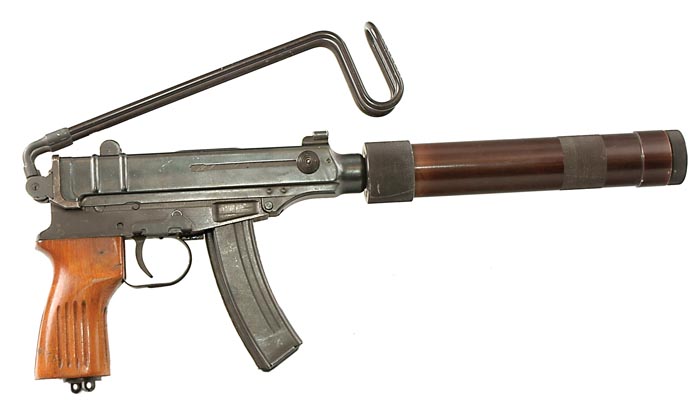
Bolt Action Rifles
There have been a variety of bolt action rifles used by the North Koreans, including French manufacture, but mostly Chinese and Russian variants of the Mosin Nagant Rifle.
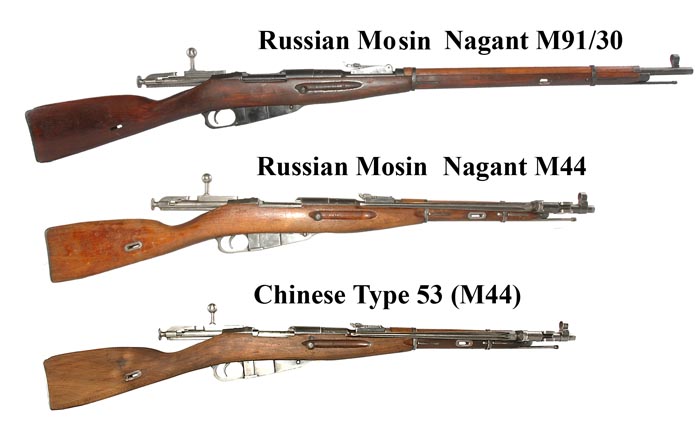
Semi-Automatic Rifles
Type 63 SKS
North Korea began their manufacture of the SKS rifle five years after they began building AK-47s. The North Korean version of the SKS, the Type 63, was started in 1963. Many people believed it was to arm second-line militias, and in fact, almost from the beginning the Type 63 SKS went to “Labour-Farming Red Guard” (The North Korean Home Guard), while the Type 58 AK-47s went to the main military units.

SVD Dragunov
The 7.62x54R caliber SVD Dragunov rifle as made by the Soviets and then the Chinese as the Chinese Type 79 are sniper rifles used in the North Korean military.

JeoByeokBoChong M76 type
The 8mm M76 type rifle used by the North Koreans is the Serbian (Zastava) M76 sniper rifle. This is reportedly manufactured in North Korea as Zastava insists that they never sold or licensed manufacture to the North Koreans.

Assault Rifles
Type 58 AK Third Model fixed stock style -1 is underfolder. North Korea decided not to manufacture any other submachine guns, and starting in1958, they began manufacturing the AK-47 under license from the Soviets. The North Korean version of AK-47 is called the Type 58 with a milled receiver, and reliable information says that approximately 800,000 Type 58s were built. The under-folding stock version, the Type 58-1, is included in that estimate. These are not very different from the Soviet original AK-47, only with Korean markings.
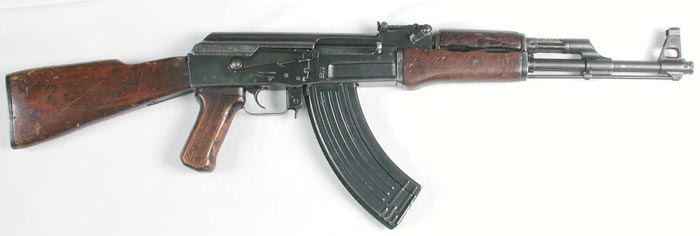
In the beginning of manufacturing the Type 58, the rifles appear to have had the receivers made in North Korea, but parts appear to be Soviet. Within a few years all parts appear to be of North Korean origin. The engineers had learned through Soviet consultants, how to build all of the AK parts by themselves. It also became obvious that the milled receiver of AK-47 (Type 58) is too labor intensive. While cost of labor itself wasn’t a major problem in a communist economy, it was too time consuming to make and North Korea wanted solution for it. The Soviets had already experienced the same thing and had a solution: the AKM with its stamped sheet metal receiver.
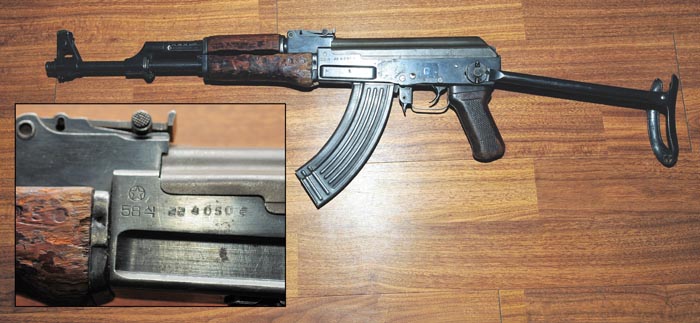
Type 68 AKM
In 1968, North Korea began their production of the AKM, the Type 68. Unlike the Type 58, which is basically the same gun as the Soviet AK-47 Type 3, the Type 68 is based upon the AKM but has some differences. For example, no rate reducer is used on the trigger mechanism, and the muzzle compensator of an AKM isn’t used. The Type 68-1 (under-folding stock version) stock has many holes, which helps reduce weight but also weakens the stock itself. After the Type 68’s introduction, most Type 58s went to the rear echelon units or Home Guard units. There were also some significant exports of the Type 58 to other Communist countries in Africa and South/Central America, as well as to North Vietnam.
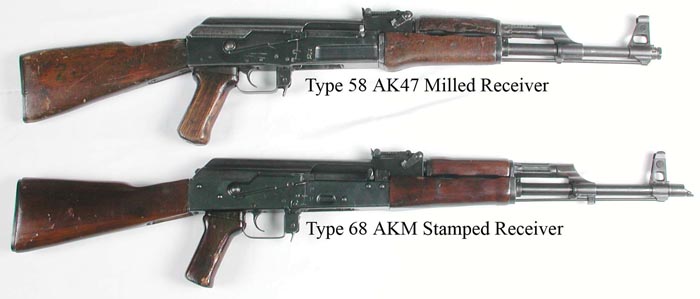
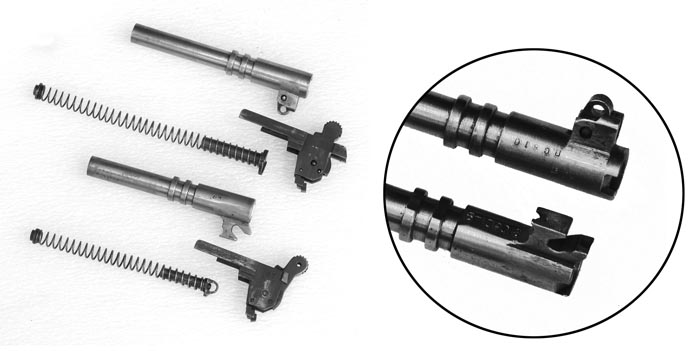
Type 88 and 98 AK74
Type 58 and 68s were used as North Korea’s main rifles for a long type, but starting in the late 1980s, North Korea began to make new small caliber rifle, the Type 88; this is basically a 5.45x39mm version of the Kalashnikov AK-74. There’s no evidence that North Korea obtained a license from Soviet Russia; rather, it’s believed that North Korea received technical support from China to make the Type 88. In fact, the North Korean Type 88 is very similar to the Chinese copy of AK-74, the Type 88. For example, the Chinese Type 88 has a sheet metal magazine, and the North Korean Type 88 has a very similar magazine. There’s no data regarding how many Type 68 and Type 88 rifles were manufactured and fielded. While Type 68s were also exported in large numbers (in Central and South American countries like Peru, North Korean made Type 68s are called “AK Corea” (Korea). The Type 88 had no known export orders (or maybe North Korea isn’t willing to sell these overseas), and to this point, actual samples in Western hands are very rare though there are some known in Japan who salvaged a few of them from a spy ship which they destroyed during 2002.
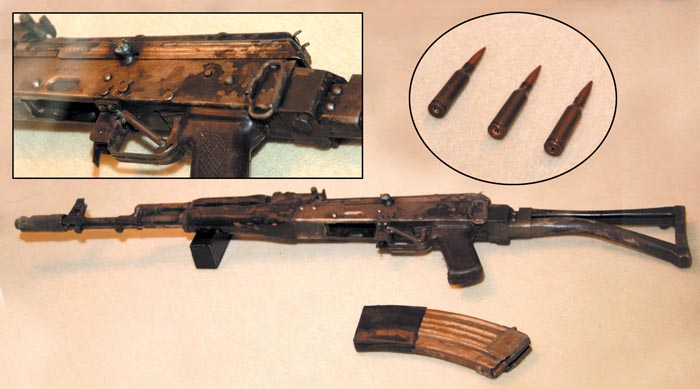
Chinese CQ and CQA M16 variants
North Korea is also using the M16A1 for special operations. In 1996, a North Korean spy submarine was grounded on a South Korean beach and a few M16A1s were found. They were unmarked weapons, completely without anything to identify them. Nobody really knows where they’re built. Neither of the authors have been able to examine these to determine the genealogy. However, from glimpses seen, these appear to be the Chinese M16 copies. In the photo is a Chinese CQA M4 carbine copy with markings.

Machine Guns
Maxim 1910 Russian or 1924 Chinese
During the Korean War of the 1950s, the Russians and Chinese supplied many weapons into the theatre on the communist side. The belt feds were primarily Maxims and the Russians supplied the 1910 on Sokolov mount (shown) while the Chinese supplied the Type 1924 on standard tripod (not shown). Much of this equipment trickled down from North Vietnam to the Viet Minh and NVA armies in the late 1950s to 1960s.
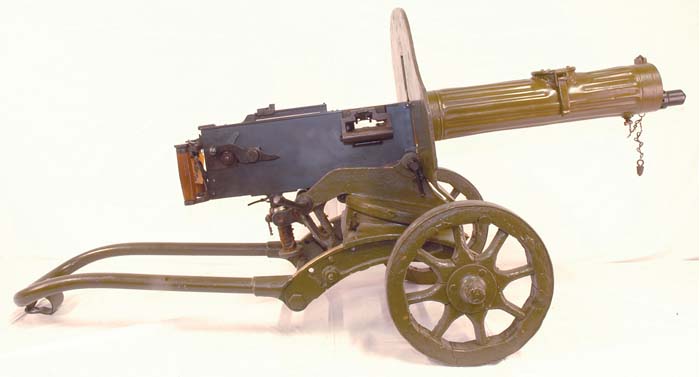
DP-28
The DP-28 machine gun was a Soviet designed 7.62x54R caliber machine gun, fed with a top mounted 47-round pan magazine. The modernized version called a DPM was exported for manufacturing to China as the Type 53 machine gun. Both the Soviet and Chinese versions were used by North Korea, but primarily the Chinese one. These were replaced by the Type 62 RPD.
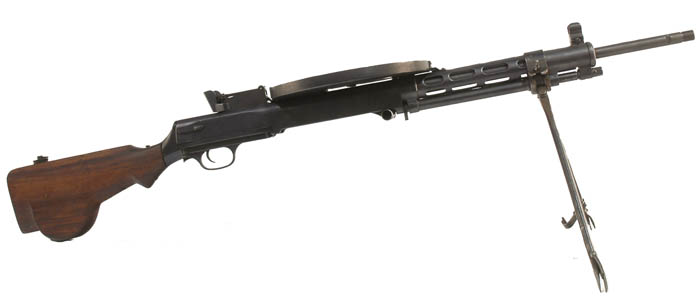
Type 62 RPD
The Soviet designed RPD machine gun is a belt fed 7.62x39mm machine gun that has seen service all over the world. It has been manufactured in China, Poland, and numerous other countries, as well as North Korea. The North Koreans exported their Type 62 to North Vietnam during the “American War” as well as Africa and South America. The example shown was captured from Viet Cong in the late 1960s.
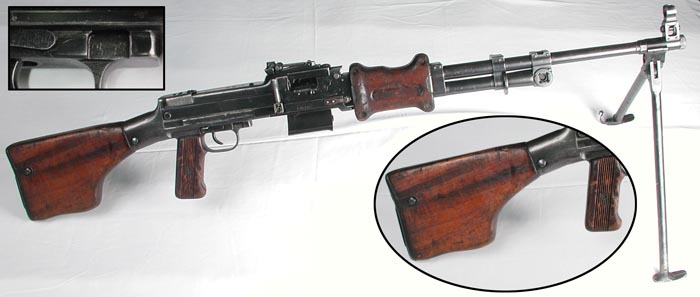
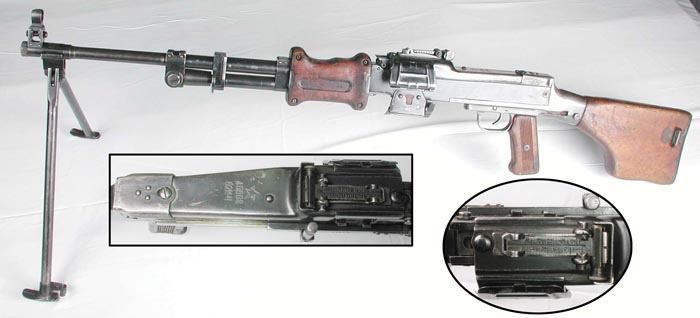
Gun-2 Minigun
In 1995, an arms dealer sold 6 here-to-for unheard of “Miniguns” to a Southeast Asian country. These were made in North Korea, and are an indigenous design in 7.62x54R caliber using forward stripping on the links. The links have a built in “ramp” on them to facilitate the heavy rim of the cartridge in forward feed. We obtained a copy of an English language manual for the “Gun 2” but still have been unable to examine a sample of this. This is a basic Gatlin design, electrically powered, and the barrels spin while firing.
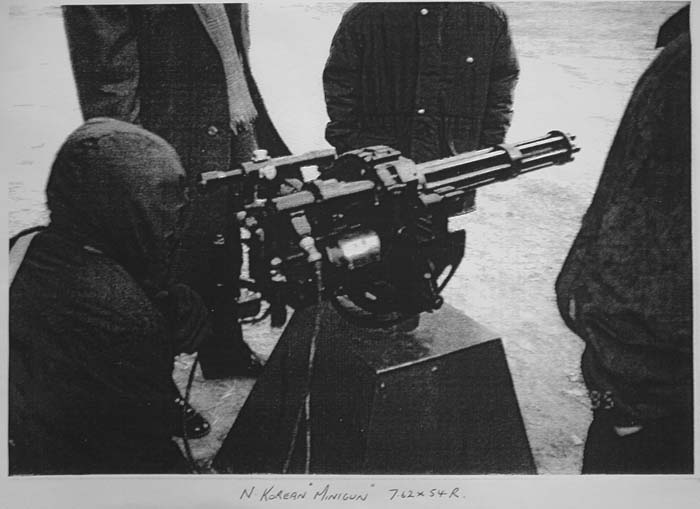

DShKM
The heavy machine gun favored by the Combloc countries for many decades was the “Dooshka” or “Dishka.” The North Koreans used Russian or Chinese made DShK in 12.7x108mm in many of their installations.
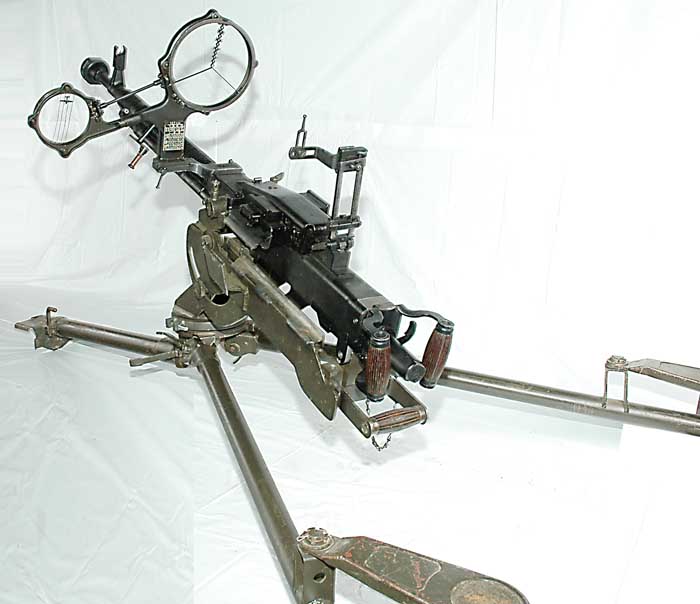
NSV
The newest heavy machine gun to spring from Mother Russia was the NSV, a 12.7x108mm machine gun that was tank mounted but adapted to infantry use with a tripod and buttstock. This high rate of fire machine gun is in use with North Korean units today, but is not made in North Korea to our knowledge.
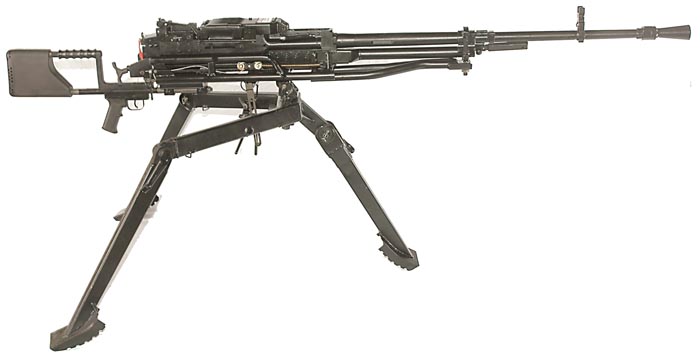
KPV
The 14.5x114mm heavy machine gun on its various mounts called “ZPU” is a staple in the North Korean inventory. Recently, two rounds from a ZPU-2 were fired across the DMZ. While there was international speculation that this was done on purpose to create an incident, it is far more likely that the operators were clearing the weapon and popped two rounds, one from each barrel, as they improperly performed their jobs. Both Russian and Chinese KPVs are observed in North Korea, and this twin is from a ship mount from the spy ship sunk by the Japanese. Most North Korean tanks have the KPVT on them.

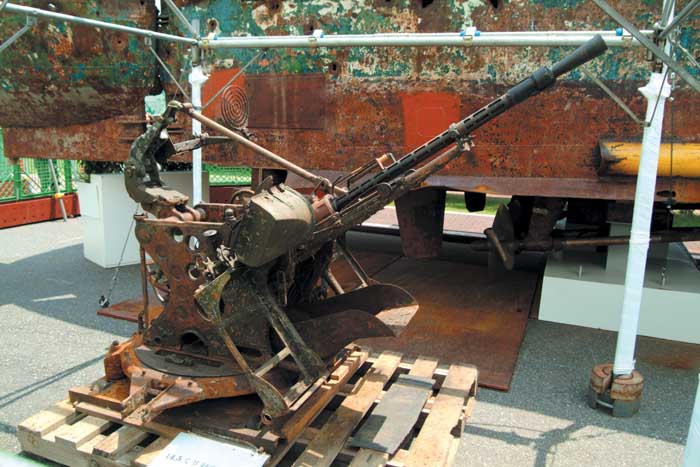
Grenade and Rocket launchers
B-10 82mm
The B-10 Recoilless Rifle system has been the workhorse of the Combloc countries for over 50 years. It is still encountered around the world, and with the sinking of the North Korean spy ship by the Japanese, an example of the Russian B-10 still in NK service was found.
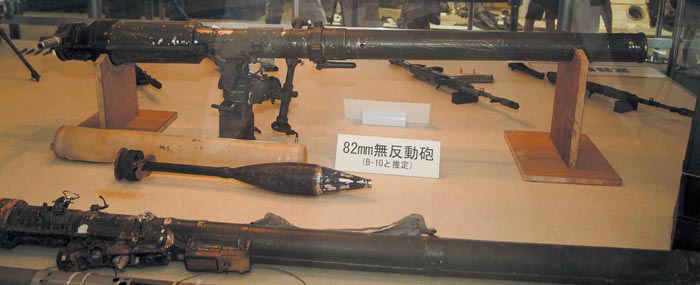
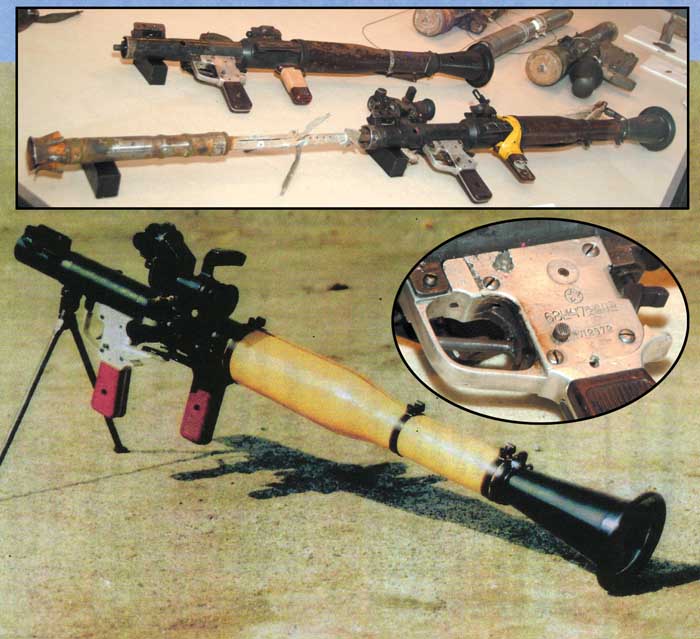
Type 68 RPG-7
The RPG-7 recoilless rifle system has been around since the mid-1960s, and it replaced the RPG-2 in North Korean service at that time. North Korea manufactures and exports the Type 68. This example was taken from the sunken spy ship off the Japanese coast.
AGS-17 30mm
North Korea advertises the AGS-17 30mm automatic grenade machine gun as manufactured indigenously. We have not seen any North Korean model in action, nor been able to examine a North Korean manufactured one, but North Korean arms dealers issue a brochure showing it made there. The AGS series has a range of 1,700 meters, and is a lightweight, very effective area weapon.
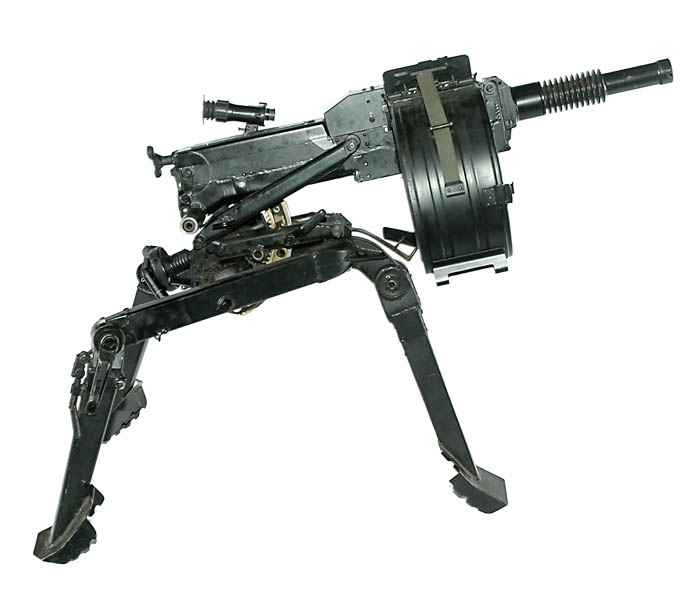
Manpad
This Manpad (Man Portable Air Defense system) IGLA-S 9K38 series was taken from the wreckage of the sunken North Korean spy vessel and is deactivated in Japanese possession.
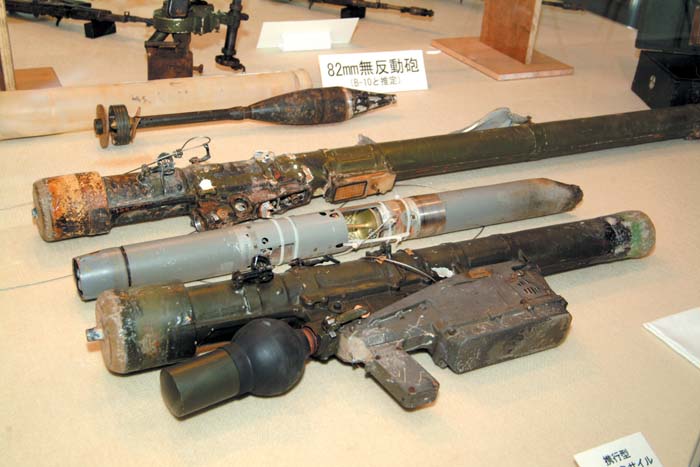
| This article first appeared in Small Arms Review V16N2 (June 2012) |










